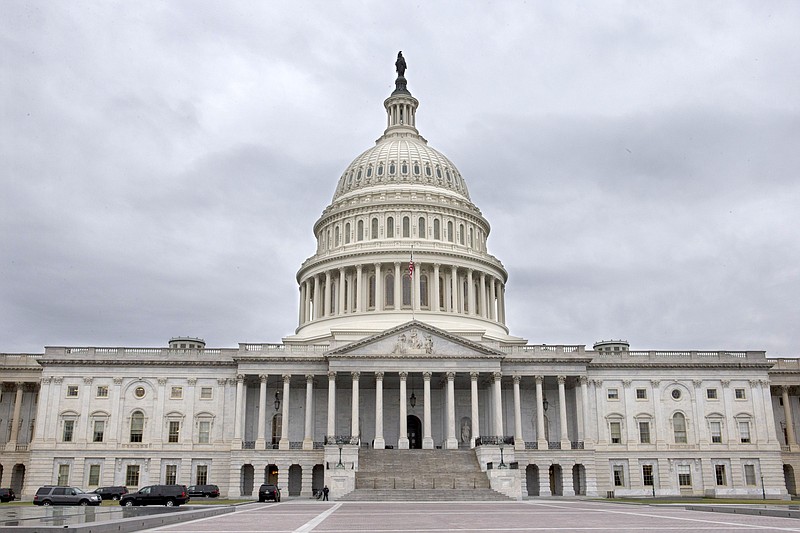Many students graduate from high school today without a figurative passing knowledge of civics. As of Jan. 1, Tennessee high school students will have to a have a literal passing knowledge of civics to graduate.
No more can "Kennedy" be the answer to the president who served during World War I, "Puerto Rico" be the reply to the territory the United States bought from France in 1803, or "the Pentagon" be the response to where "Congress meets."
Passing the test will not be a requirement for graduation, but students will have to take the test over and over until they receive a passing grade - or until they are ushered out the door with a civics-less diploma.
The goal of the 2015 law, whose primary sponsor was state Rep. Gerald McCormick, R-Hixson, was to shore up students' abysmal knowledge of their government.
The bill as written would have kept students from receiving their diplomas unless they passed the test. And by passing, students only would have had to have correct 60 percent of whatever number was posed of the 100 questions from the civics portion of the United States citizenship test administered by the United States Citizenship and Immigration Services.
That's the same percentage individuals attempting to become citizens must score correctly, but they must get only six out of 10 right in an oral examination.
McCormick's bill was amended to keep the test from being a graduation requirement, to set the number of questions at 25 to 50 (25 in Hamilton County) and to set the percentage that must be answered correctly to 70 percent.
If students today had a better knowledge of their government's origin, what it does and does not do, who represents them and why people have fought so hard to keep what the Founding Fathers gave us, the federal government's annual operation might become more important to them. Instead of taking a hands-off approach and believing whatever anyone involved in Beltway media tells them or what semi-factual issues filter into comedy shows or their Facebook feeds, they might take the time to learn the truth for themselves.
Indeed, making fun of Americans' knowledge of government and history has become a cottage industry for late-night comedians and politically minded organizations.
One survey, done by the Immigrant Archive Project, quizzed 15 people on some of the questions immigrants are asked to become U.S. citizens. Only one of the 15 quizzed in Miami in 2014 scored the minimum number of correct questions to have passed.
Witness the debacle:
* Answers to the number of amendments to the Constitution - admittedly not an easy one - ranged from 16 to 64 to "A lot now. I don't know." The correct answer is 27.
* At least three people were sure Susan B. Anthony designed the first American flag. She, in fact, was a 19th-century advocate of civil and women's rights.
* Several were in the correct time frame in guessing that the author of the Declaration of Independence was George Washington, John Adams or Ben Franklin. But fellow Founding Father Thomas Jefferson was the actual document writer.
* The year the Constitution was written elicited the years of 1775, 1776, "1772ish," 1773, "Um, shoot, 19 ...? ...18 ...40?" and "Why am I supposed to know that, man?" The answer is 1787.
When former "Tonight Show" host Jay Leno asked some of the same questions posed to immigrants in a "Jaywalking" segment, some of the answers he received also were beauts.
* An elementary school teacher, when asked who spoke the phrase "Give me liberty or give me death," responded: "I'm not good with names. Only my own and my students.... Bonaparte?" It was Patrick Henry, but the question is no longer in the U.S. Citizenship and Immigration Services 100.
* One respondent's answer to how many stars are in the American flag began with "32." Pointed toward the flag, she looked at it, then responded, "It's moving too fast to count 'em." The flag, when it's slow enough to count the stars, has 50, matching the number of states.
* Another was puzzled when asked where Congress meets. The answer, after all, could be Washington, D.C. When the question was clarified to ask in which building Congress meets, he had the answer - the Pentagon. In fact, it's the U.S. Capitol.
Some of the questions on the citizenship test should be able to be answered by elementary school students: the capitol of your state (Nashville), when the Declaration of Independence was adopted (July 4, 1776), who is the "Father of Our Country" (George Washington) and the name of the war between the North and the South (Civil War, War Between the States).
Others require a little thinking: What stops one branch of government from becoming too powerful? What is the rule of law? What does the Constitution do? And what one promise you make when you become a United States citizen.
No high school student should make it to his senior year without knowing solid answers to 80 or 90 of the 100 questions. Yet, the new law is now in effect because they don't.
May 2017 be the beginning of the renaissance of knowledge in civics and American history by Tennessee students.
